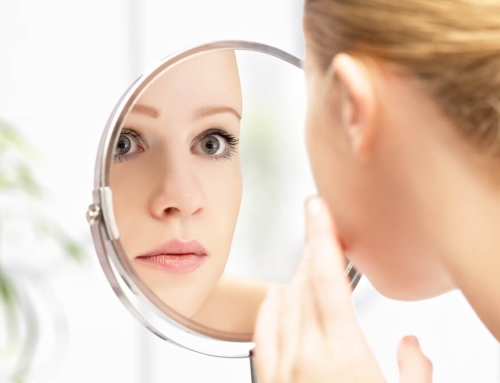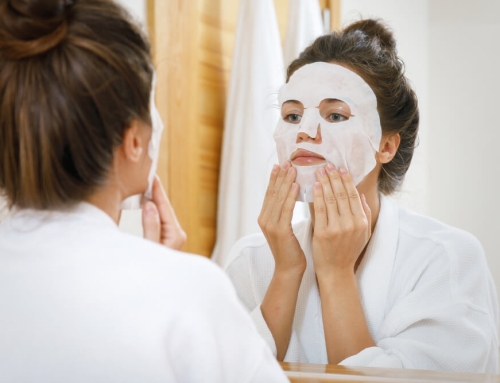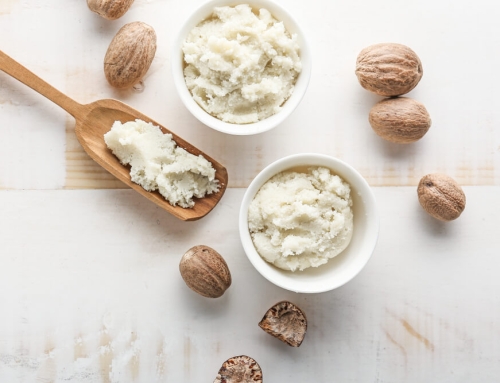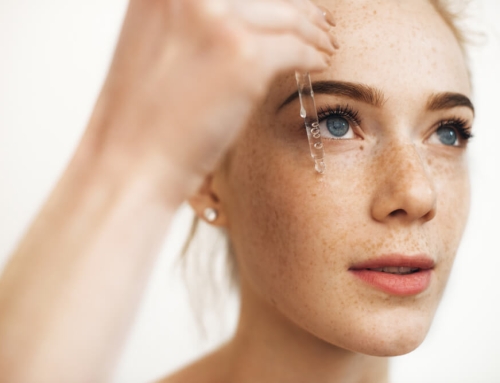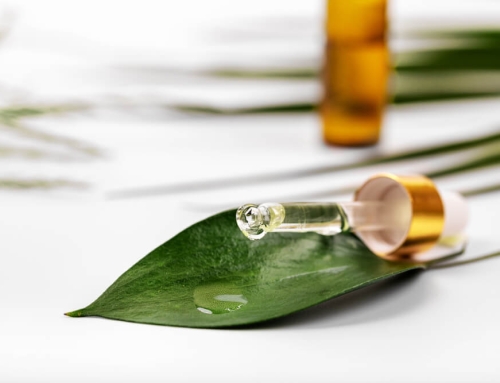Ever looked at the ingredients list of a skincare product and felt completely confused?
With so many long ingredient names on there, many of which are difficult to even pronounce, along with abbreviations that just don’t seem to make sense, confusion is hardly surprising!
While you may automatically assume that these complicated ingredients are best avoided, this isn’t the case at all. Many of them can actually be extremely beneficial to your skin! To make your life a little easier, here are ten confusing skincare ingredients explained, so that you know exactly what it is you are putting onto your skin.
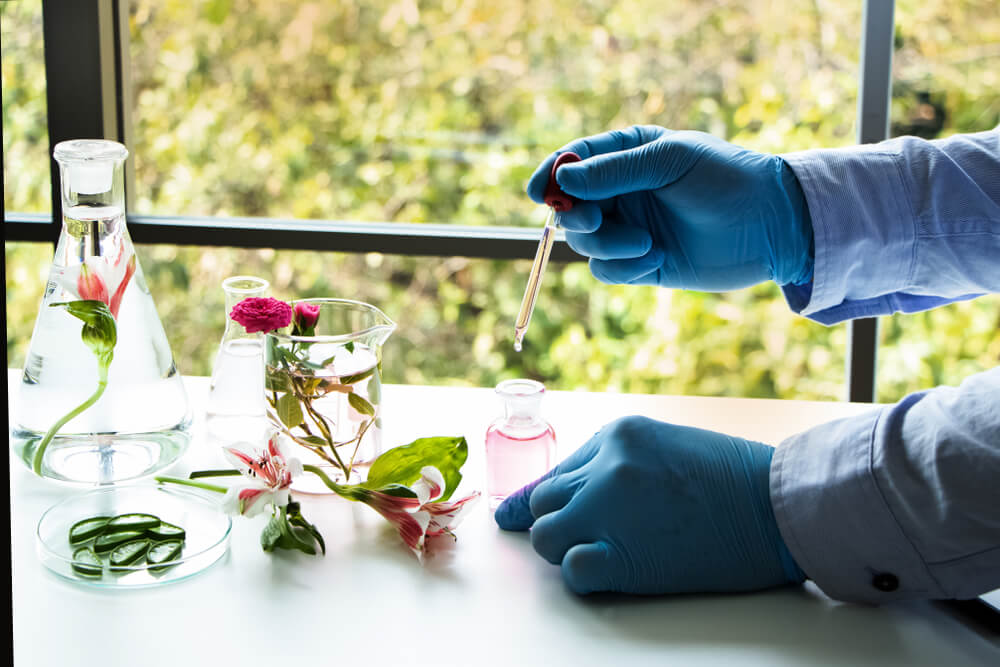
Cetyl Alcohol
Let’s begin with an alcohol that is commonly used in cosmetics. After all, don’t all alcohols have a drying, oil-stripping effect on the skin?
No, definitely not! Some alcohols, known as fatty alcohols, can actually be highly beneficial.
Cetyl alcohol is one of these. It usually comes from plant oils, such as coconut oil, and, in addition to making a product formula much easier to spread, it also helps the skin by improving everything from softness to smoothness to moisture retention.
Stearyl alcohol is another useful fatty alcohol, whereas the bad alcohols that you should be avoiding include:
-
- Isopropyl alcohol
- Denatured alcohol
- SD alcohol
DMAE
DMAE stands for dimethylaminoethanol, which has probably only baffled you even further.
Don’t worry, this is an ingredient that you don’t need to be afraid of. There are several studies out there that point to the many different benefits that DMAE can bring to the skin, such as:
- Improved elasticity
- Reduced fine lines and wrinkles
- Tighter and firmer skin
- Less inflammation
- Brightening and lightening of dark circles under the eyes
- Increased thickness of the dermis and epidermis, making the skin tougher and more resilient
Sounds pretty good, right?
We think so too, which is why we have dedicated an entire collection to this skincare superstar. Each of the three products in the OROGOLD DMAE Collection feature the ingredient, making these products a must if you are trying to turn back the effects of time.
Capric Triglyceride
Capric triglyceride is an ingredient that combines glycerin with the fatty acids from coconut oil. One of its main benefits is that it acts as a natural preservative, helping to extend the shelf life of active ingredients. When you look at the other preservative options out there, many of which can cause some serious damage to your overall health, capric triglyceride really is a fantastic alternative.
In addition to being an effective, yet safe, preservative, it also offers up some unique skin benefits, making it no surprise that this ingredient has been gaining in popularity.
It is known for the way in which it softens and smooths the skin, trapping in moisture to keep skin cells hydrated and plumped up.
It also works as an antioxidant, neutralizing the free radicals in your skin before they have the chance to cause any long-term damage.
This ingredient is safe to be used by all skin types. You would only need to consider avoiding it if you happen to have a severe allergy to coconut oil, which is pretty rare.
Titanium Dioxide
If you use a mineral sunscreen, then titanium dioxide is an ingredient that you have likely already heard of.
Rather than penetrating into the skin, this mineral sits on the surface, reflecting the sun’s rays away and preventing them from entering into the skin. It provides a high amount of UVB protection, although slightly less UVA protection, but still makes for a fantastic broad-spectrum sunscreen ingredient.
Products containing titanium dioxide do tend to have a whiter tint to them. However, this isn’t necessarily a bad thing…
When combined with specific other ingredients, titanium dioxide is able to help the skin look brighter and lighter, minimizing the appearance of blemishes.
Tetrahexyldecyl Ascorbate
Here’s another ingredient that may seem difficult to pronounce, but the word “ascorbate” in there should give you a clue as to what this ingredient actually is…
Tetrahexyldecyl ascorbate is a form of vitamin C. In fact, it is one of the most stable forms of the vitamin out there.
You probably already know that vitamin C is an ingredient that just about everybody should be using, with its benefits being extremely varied. However, one of the main problems with including vitamin C in a product formulation is that this ingredient can be difficult to keep stable, which is why some of its derivatives were developed. Another common issue is the fact that pure vitamin C is water-soluble, meaning that it isn’t able to easily penetrate through your skin’s lipid layer.
This is where tetrahexyldecyl ascorbate becomes a huge game-changer…
Not only is this ingredient much more stable than the other vitamin C derivatives, but it is also lipid-soluble, enabling it to reach the skin cells that really need it.
What does it do once it reaches the dermis layer of your skin?
Many different things, such as:
- Stimulates the production of collagen
- Stimulates the production of water-binding compounds in the skin
- Protects against oxidative damage
- Lightens excess pigmentation
- Reduces inflammation
You probably want to give this ingredient a try now, and who could blame you!
Well, you will find tetrahexyldecyl ascorbate in the OROGOLD 24K Dark Circle Eye Solution. This potent formula also contains vitamin A, vitamin E, resveratrol and several botanical extracts, all of which work so well with tetrahexyldecyl ascorbate.
Hydrolyzed Wheat Protein
Just about everyone has heard of wheat. After all, this is what some of the most popular foods out there are made from.
However, in addition to being a commonly consumed ingredient, wheat actually brings with it some surprising benefits for the skin. Of course, in order for wheat to actually be able to penetrate into the skin, it needs to be broken down into smaller amino acids, and this is where the “hydrolyzed” comes in.
The process enables wheat protein to penetrate into the skin, where it then:
-
- Softens the skin
- Forms a thin film of protection over the skin’s surface, preventing transepidermal water loss
- Provides a dose of moisture and hydration
- Minimizes the appearance of enlarged pores
Acetyl Hexapeptide-8 (& Other Peptides)
Peptides are becoming more and more popular in skin care products, and for good reason too.
Wondering what peptides actually are?
Peptides are made up of chains of amino acids, and these are basically the building blocks that form the proteins in your skin. Those proteins include collagen and elastin, which give your skin its structure, firmness and tightness. Unfortunately, with age, the rate at which your skin produces those proteins declines, which is why ingredient that can help to boost this production back up are so sought after.
Well, peptides are able to do this, and acetyl hexapeptide-8 is a type of peptide.
Yes, there are several different types of peptides out there, and while they do all help with protein production in your skin, each one has some additional unique benefits too.
In the case of acetyl hexapeptide-8, its advantages are pretty special…
This ingredient, which is also known as Argireline, is made from one of the same proteins used in Botox. When applied to the skin, its effects are not quite as dramatic as Botox, but the concept is pretty similar.
Acetyl hexapeptide-8 works by relaxing the muscles underneath the face, which then reduces the appearance of expression lines. It is a great anti-aging ingredient, as it has been shown to have an effect even on deeper wrinkles.
If you really want to pile on the peptides, here are a few others worth keeping an eye out for:
- Copper peptides – these deliver trace elements into the skin, significantly boosting the production of collagen and elastin while also promoting skin healing and repair
- Palmitoyl tetrapeptide-28 and 38 – both of these peptides work in a similar way to acetyl hexapeptide-8, relaxing facial muscles to reduce the appearance of expression lines
- Palmitoyl oligopeptide-7 and palmitoyl pentapeptide-4 – these are known as signaling peptides, because they send signals to your skin cells to tell them to act in a certain way, such as stimulating them to produce more proteins and be more active in general
Don’t worry if the names seem confusing – just look for the word peptide in the ingredient name.
Sodium Hyaluronate
If you have been paying attention to some of the latest must-have skin care ingredients out there, then you have probably heard of hyaluronic acid.
Hyaluronic acid is a humectant, which means that it absorbs moisture from the environment around it, before delivering this to the skin. There are several humectants used in cosmetics, but hyaluronic acid is one of the best, and is able to hold up to 1000 times its weight in water. This means that only a tiny amount of hyaluronic acid could provide a massive moisture boost to your skin.
So, what does sodium hyaluronate have to do with all of this?
Well, sodium hyaluronate, also known as low molecular hyaluronic acid, is another form of hyaluronic acid. The main difference between the two is in their molecular size – sodium hyaluronate features much smaller molecules than hyaluronic acid.
This means that, unlike hyaluronic acid, which mainly works on the surface of the skin, sodium hyaluronate is able to penetrate deeper, providing moisture to those skin cells that need it the most.

Of course, this doesn’t mean that sodium hyaluronate is better than hyaluronic acid, as the surface of your skin will always benefit from some extra moisture too. Ideally, if you are looking to maximize the benefits of this ingredient, look for a product that contains both hyaluronic acid and sodium hyaluronate, so that you know that the product will work on multiple layers of your skin.
Tocopheryl Acetate
As you already know, vitamins are fantastic for the skin.
Well, tocopheryl acetate is just another vitamin…
While its name may seem a little confusing, tocopheryl acetate is simply a form of vitamin E.
Just like with vitamin C, pure vitamin E can be pretty unstable, making it difficult to formulate into skin care products. Not only does this interfere with shelf life, but it is also difficult to determine how quickly the ingredient degrades when mixed with other ingredients.
Fortunately, these problems don’t exist with tocopheryl acetate. This form of vitamin C is highly stable, able to withstand heat, light and oxygen – all of which normally degrade active ingredients quite quickly.
Why should you be using tocopheryl acetate?
Because it is an effective healing ingredient. It helps to reduce damage that has been caused by sun exposure, even damage that has occurred to the DNA in your skin cells. It is also able to reduce excess pigmentation, giving the skin a lighter and brighter appearance.
Tocopheryl acetate becomes even more powerful when combined with other vitamins and antioxidants, so look for products that contain a good mixture of these.
Allantoin
Allantoin is an ingredient that comes from a variety of different plants. While comfrey, which is a European herb, is one of the best sources of this ingredient, it can also be found in everything from chamomile to sugar beet to wheat sprouts.
Although it may not be quite as popular as some of the other botanicals out there, allantoin brings with it some useful benefits, such as:
- Keratolytic properties, which means that it is able to increase the water content of skin cells
- Gives the skin a smoother look and feel
- Promotes cell division, while increasing the lifespan of skin cells
- Speeds up wound healing
While allantoin may have some powerful effects on the skin, it is actually extremely gentle, making it a beneficial ingredient for all skin types to use.
Well, there you have it! Ten confusing skin care ingredients that you now know so much more about. So, rather than avoiding these ingredients in the future, make it a point to try to include more of them in your skin care routine.


